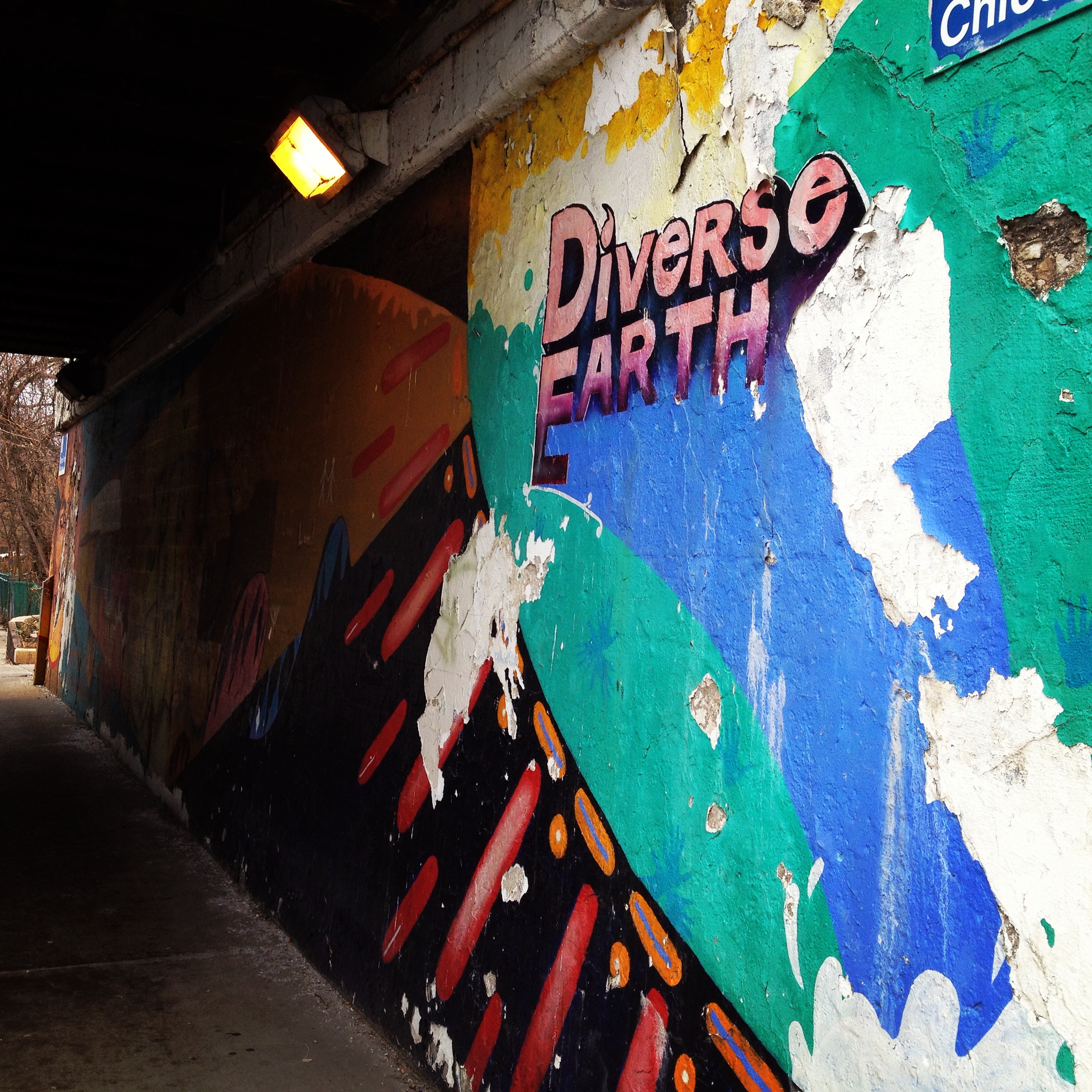
Neighborhood Observations
[flickr id=”8410362749″ thumbnail=”medium” overlay=”true” size=”original” group=”” align=”none”]
Our final assignment from our Dimensions of Multicultural/Global Awareness class reads as follows:
“Chicago and its collar suburbs are an amalgam of various ethnic neighborhoods—from Bridgeport to Little Italy, Pilsen, Chinatown, and beyond. These neighborhoods are your palette for a creative multicultural scenario that may become your reality during your teaching career. Remember the teacher tagline, “it’s not about me?” This is your opportunity to inhabit the multicultural world and sensibility of one of your potential students.”
The goal of the assignment, in essence, is to research a neighborhood’s background and inhabitants and then go out and visit it to get a sense of who the students might be who live there. One of the tenants of teaching is to know not just your school but also the community that surrounds it. My classmates and I set off to visit the neighborhood of “Little India”, which stretches along Devon Avenue from Ravenswood to California.
[flickr id=”8411461804″ thumbnail=”medium” overlay=”true” size=”original” group=”” align=”none”]
Initially, I admit I felt trouble with this assignment. I felt like it might make me feel more like a tourist than a true observer. I was also concerned that any concept of who my students might be based on just what I see on the streets would come off as a surface understanding. I picked Little India, or West Ridge, because it is the home of my student teaching school. I biked by the businesses along Devon all summer, but I never stopped in. What I found in the neighborhood was actually helpful to me. I realized that while I feel like I have an understanding of who my students are because I interact with them everyday, we don’t often get a chance to really discuss their home culture. I’m by no means assuming that what I experienced on Devon is the experience of my students, but it did help me realize that I can become more fluent in their culture by both bringing multiculturalism into the classroom and taking the initiative to be present where they live. I can name places I shopped, foods I tried, and books I read to my students, and they will see me trying to get to know them not just as students but also as unique people.
[flickr id=”8411461202″ thumbnail=”medium” overlay=”true” size=”original” group=”” align=”none”]
We were very fortunate to discover that, on the day of our neighborhood visit, some of my students were performing in a dance recital at their school. My students invited me to attend, and I very graciously accepted. I was delighted to find that the dance pieces were all inspired by Chagal’s America Windows we saw at the Art Institute and the dance pieces we saw at Hubbard Street Dance. My students performed with energy and enthusiasm, and I’m now feeling really excited to explore some performance art in the classroom this spring!
[flickr id=”8411459678″ thumbnail=”medium” overlay=”true” size=”original” group=”” align=”none”]
The same week of this assignment, my husband and I had volunteered to paint a youth center in West Ridge for National Day of Service. This gave me a chance to speak with other educators in the neighborhood about the students they serve. The youth center works predominately with low income students. The teachers spoke to me of students who come in speaking barely any English and who are so keen to find non-verbal ways to express themselves. They described the guilt they feel when students turn thirteen and can no longer attend their programs. The educators all live and work in the neighborhood; it is home to them. They see the work they do not just shaping the lives of students, but also helping to make their city better. It was inspiring. I hope to volunteer there again soon.
[flickr id=”8411460162″ thumbnail=”medium_640″ overlay=”true” size=”original” group=”” align=”none”]
